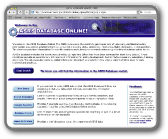Issues with TCAS
Editor’s Note: This article was stimulated by an ASRS Aviation Safety Telecon with representatives of FAA’s William J. Hughes Technical Center and NASA technical representatives on the subject of incidents involving apparent false Traffic Collision Avoidance System (TCAS) alerts and Passenger Electronic Devices (PEDs). At least some of these incidents can be attributed to the failure of a system termed the “mutual suppression bus.” Pilots and technicians may find the information provided here useful.
False TCAS Advisories –
The Mutual Suppression Bus
- We were being vectored by Approach Control for an ILS approach to Runway 17C. We were level at 5,000 feet in IMC. A [TCAS] target appeared out of nowhere at our altitude and looked to be superimposed on our aircraft. We got an immediate Traffic Alert followed by a command to climb at a rate in excess of 2,500 fpm. I disconnected the autopilot and followed the TCAS resolution. The target continued to show level at our altitude even as we climbed to 6,400 feet. We advised Approach Control that we were responding to a Resolution Advisory (RA). We were recleared to descend to 4,000 feet and given vectors to continue the approach. After we were established on the Glide Slope we got another similar warning with an aircraft superimposed on our position and again at the same altitude. This time the command was to descend, but before I could take any action, the target and warning disappeared. The flight continued without any further incidents. We wrote up the TCAS system for maintenance on arrival.
 An aircraft is flying along and there are no nearby targets on its TCAS display. Suddenly, the TCAS is issuing rapid-fire commands, and a red target appears in the center of the TCAS display. The red target is only about 0.1 mile away and co-altitude, or nearly so. After some maneuvering, the pilots begin to question what they see, since ATC is telling them there are no aircraft nearby. What is going on? An aircraft is flying along and there are no nearby targets on its TCAS display. Suddenly, the TCAS is issuing rapid-fire commands, and a red target appears in the center of the TCAS display. The red target is only about 0.1 mile away and co-altitude, or nearly so. After some maneuvering, the pilots begin to question what they see, since ATC is telling them there are no aircraft nearby. What is going on?
Any time a flight crew’s TCAS displays a false target right on top of their own aircraft symbol with an altitude close to their own ship, the problem usually can be traced to a failure of the mutual suppression bus.
The suppression bus is a signal line on the airplane that allows the transponder, TCAS, and navigation systems to coordinate with each other. When one system is transmitting, it puts 28 volts DC on the bus to tell the other equipment not to listen or transmit. If the transponder and TCAS systems on the same airplane do not have a suppression bus connection, the aircraft’s transponder will reply to the TCAS interrogation. TCAS will see this as a very close transponder, start tracking it, and immediately will issue a Resolution Advisory (RA).
The suppression bus failure that causes this problem is usually due to an intermittent connection. The TCAS tracks all the transponder-equipped aircraft it can “see.” The TCAS works like a secondary surveillance radar, scanning 360 degrees in one second, but it does not have a moving antenna. To establish a track on a target, the TCAS must see four good replies from a transponder. On the fifth valid reply, the TCAS will begin to display the target on the screen. If the target meets the advisory criteria, TCAS also will issue the advisory. If the target is a Resolution Advisory (RA), the TCAS must hold the advisory for five seconds, even if the target is no longer being seen by the TCAS.
If there is a loose connection on the suppression bus between the TCAS system and the transponder, and the transponder only occasionally breaks the connection, the problem may go unnoticed for some time. For the problem to be noticeable, the connection must break for about five seconds continuously or five times in a row just when the TCAS is interrogating. If TCAS issues an RA, the RA will be displayed for five seconds, even if an RA condition no longer exists.
False TCAS Advisories and PEDs
Can Passenger Electronic Devices (PEDs) cause false TCAS advisories? Although PEDs have been suspected in many events, experts at FAA’s William J. Hughes Technical Center feel that PEDs are unlikely sources of TCAS events, noting that PEDs do not generate signals of the required complexity and power to effect TCAS. Most instances of suspected PED-generated false TCAS alerts reported to ASRS are likely cases of suppression bus failure.
An incident reported to ASRS by a DC-9 Captain illustrates how suspected PED use proved not to be a factor in a false TCAS Resolution Advisory:
- While level at 6,000 feet...at 250 knots clean, we had just been handed off to Final Approach when we got a TCAS II Resolution Advisory (RA) to climb full scale at 6,000 fpm with no proximate traffic preliminaries. The First Officer as Pilot Flying immediately began a max performance climb while I went heads up to acquire the traffic which had popped up at a 12 o’clock position less than one mile altitude –03. I did not see any traffic, and by the time I could get a word in edgewise on the frequency to tell ATC about the RA, the RA had evaporated with no ‘clear of conflict’ annunciation. (Initially, the target had appeared to climb with us, maintaining a –00 altitude differential.) The First Officer leveled off at 7,000 feet and then began a descent back down to 6,000 feet. ATC said there was no traffic near us which should have provided an RA. I tested the TCAS II (test OK) and asked the lead Flight Attendant to do a PED walk. She reported no obvious PED use. As Approach handed us off to Local Control, he told us there was VFR traffic below us at 3,500 feet at the time of the RA....
For a Passenger Electronic Device (PED) to cause a problem with the TCAS system, the experts at FAA’s Tech Center advise that it must do one of two things:
- Generate a signal that is mistaken for a real transponder. The reply from a transponder is very specially constructed. It is a series of pulses on 1090 MHz, and this frequency must be accurate. Each pulse has very tight specifications for position, width, and rise and fall times. The transponder signal is complex and is difficult to create accidentally.
- Generate interference sufficient to render the TCAS unable to listen to incoming signals. This means the PED has to transmit a signal at the correct frequency with enough power to make it past the TCAS receiver front end to the signal processor. The signal from the PED would first have to make it through the passenger compartment and either into the avionics bay, or outside the aircraft to go through the antenna.
When pilots encounter a problem with a TCAS, it is important to notice details. Note altitude, vector, and position, and any details on the target, such as range and relative altitude when writing up the incident. Accurate information is essential for TCAS experts to try to reconstruct and analyze problems.
Technical information about TCAS suppression bus failure was provided by Kevin Fehr of the FAA's William J. Hughes Technical Center.
The Eyes Have It
Our feature on TCAS would be incomplete without an important reminder – that see-and-avoid vigilance is the last line of defense against close encounters of an unwanted kind. FAR 91.113(b) spells out this requirement:
When weather conditions permit, regardless of whether an operation is conducted under instrument flight rules or visual flight rules, vigilance shall be maintained by each person operating an aircraft so as to see and avoid other aircraft...
This means that it’s important for pilots to keep their heads on a swivel and their visual scan going – no matter what other aids to traffic separation they may have.
“We Didn’t Have the Luxury of a TCAS RA”
As an example of the importance of see-and-avoid, a B737 Captain describes a near-miss on a busy departure route – in spite of having TCAS II on board:
-
...After clean-up and checklist completion, I settled into the climb, alert and heads up leaving an extremely busy airport. About 7-8 miles out, climbing through 3,000 feet MSL, I looked ahead and observed a small aircraft, dead ahead, same direction, and an obvious potential conflict. Our closure rate was fast, and the First Officer, the Pilot Flying, never fixed on him until I began initiating an evasive maneuver. We jointly executed a very smooth slight left turn and slight pitch up and watched the aircraft pass just below and to the right of our flight path. Because of snow-covered mountain backdrop, it was extremely difficult to spot this aircraft. Because this operator chooses to operate their aircraft with no transponder, we didn’t have the luxury of a TCAS Resolution Advisory (RA)...There was no heads up from Tower...and no TCAS II...The FAA officials who interviewed us upon arrival thanked me...for being alert enough to see and avoid...Basically it was my alertness and nothing else which avoided a midair disaster.
 The ASRS Database Is Now Searchable Online! The ASRS Database Is Now Searchable Online!
The ASRS database is available through a browser-based, cross-platform “Web Query” link developed by ASRS. The ASRS database is the world’s largest repository of voluntary, confidential safety information – provided by aviation’s frontline personnel, including pilots, controllers, mechanics, flight attendants, dispatchers, and others. The database provides a foundation for specific aviation safety products and subsequent research addressing a variety of issues.
ASRS’s database includes the narratives submitted by reporters (after they have been sanitized for identifying details). These narratives provide an exceptionally rich source of information for policy development, human factors research, education, training, and more. The database also contains coded information by expert analysts from the original report that is used for data retrieval and analyses.
We would appreciate your feedback about the ASRS Database Online service. There is a link for supplying user feedback about the ASRS Database Online service. Users can tell ASRS what they like, don’t like, and what they would like to see in future versions. This feedback will help ASRS develop and improve online search capabilities.
Meet
the Staff
Richard “Rick” Ulrick

Rick Ulrick, a new member of the ASRS analyst group, is one of the only analysts to have previous ties to Moffett Field, California, the home of the ASRS program. Rick was trained as a U.S. Navy pilot and flew P-3 Orions out of Moffett Field in the early 1970’s. Following his stint with the Navy, Rick became an air carrier pilot and flew with Transamerica Airlines, PSA, and US Airways until his retirement in 2006.
As an Aviation Safety Analyst, Rick is being exposed to the full spectrum of ASRS reporting. He performs final analysis on reports from pilots (air carrier and GA), flight attendants, helicopter pilots, and balloon pilots.
Away from ASRS, Rick enjoys snow skiing, backpacking, and ocean- and fresh-water fishing.
|


